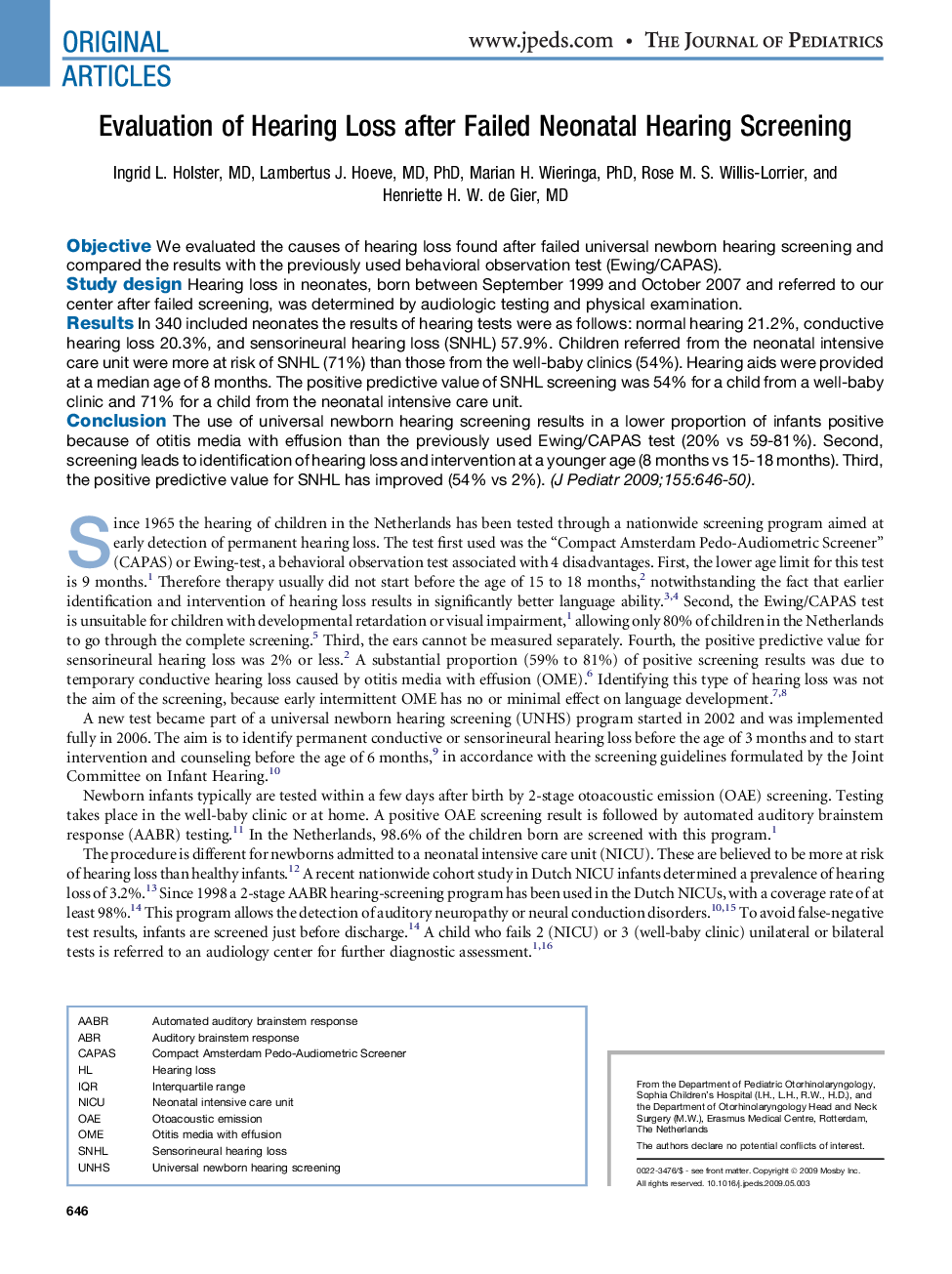| کد مقاله | کد نشریه | سال انتشار | مقاله انگلیسی | نسخه تمام متن |
|---|---|---|---|---|
| 4167403 | 1607516 | 2009 | 5 صفحه PDF | دانلود رایگان |

ObjectiveWe evaluated the causes of hearing loss found after failed universal newborn hearing screening and compared the results with the previously used behavioral observation test (Ewing/CAPAS).Study designHearing loss in neonates, born between September 1999 and October 2007 and referred to our center after failed screening, was determined by audiologic testing and physical examination.ResultsIn 340 included neonates the results of hearing tests were as follows: normal hearing 21.2%, conductive hearing loss 20.3%, and sensorineural hearing loss (SNHL) 57.9%. Children referred from the neonatal intensive care unit were more at risk of SNHL (71%) than those from the well-baby clinics (54%). Hearing aids were provided at a median age of 8 months. The positive predictive value of SNHL screening was 54% for a child from a well-baby clinic and 71% for a child from the neonatal intensive care unit.ConclusionThe use of universal newborn hearing screening results in a lower proportion of infants positive because of otitis media with effusion than the previously used Ewing/CAPAS test (20% vs 59-81%). Second, screening leads to identification of hearing loss and intervention at a younger age (8 months vs 15-18 months). Third, the positive predictive value for SNHL has improved (54% vs 2%).
Journal: The Journal of Pediatrics - Volume 155, Issue 5, November 2009, Pages 646–650